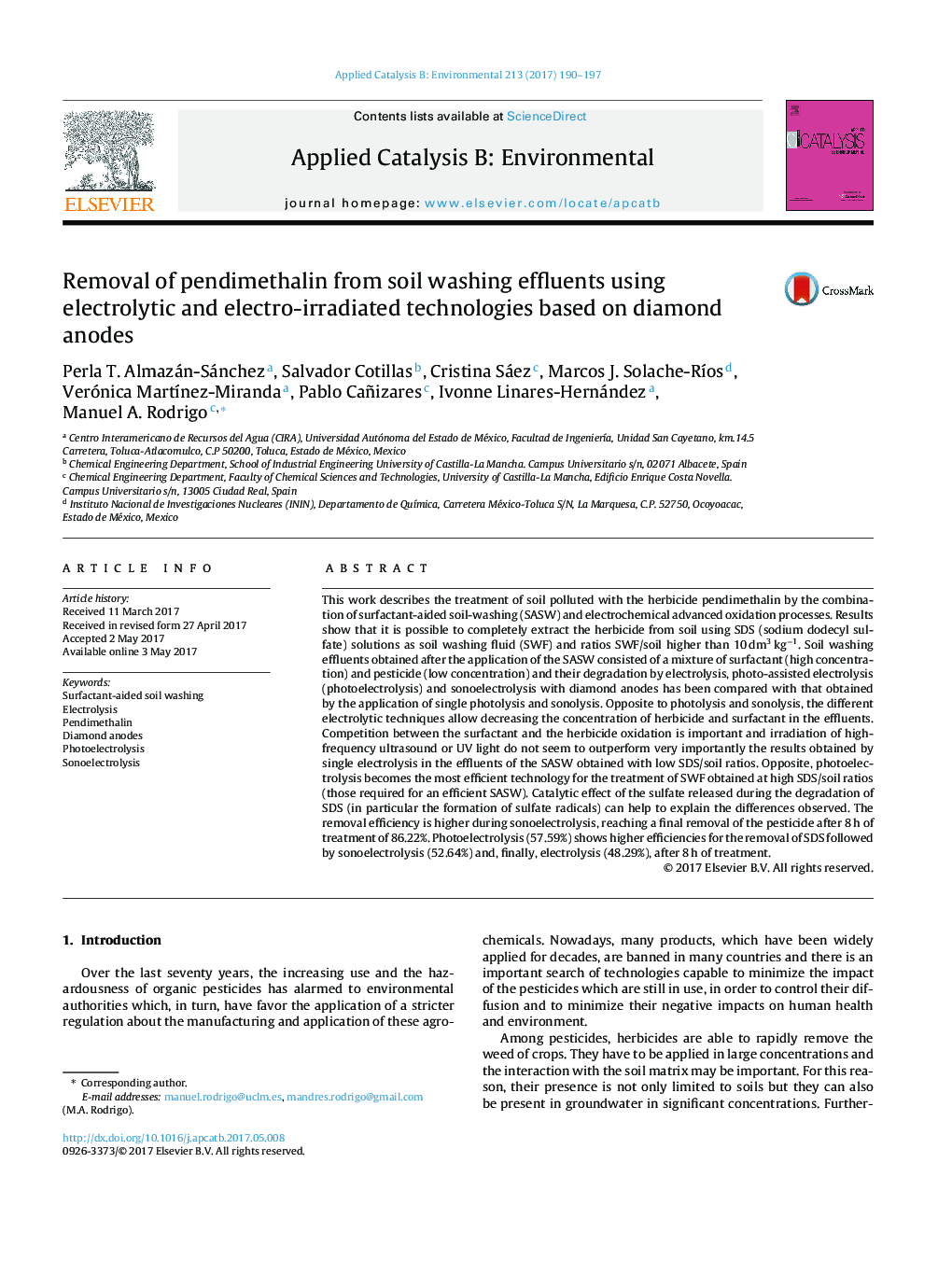| Article ID | Journal | Published Year | Pages | File Type |
|---|---|---|---|---|
| 6453896 | Applied Catalysis B: Environmental | 2017 | 8 Pages |
â¢Pendimethalin can be extracted from soils using surfactant-added soil-washing.â¢Electrolysis decreases simultaneously the herbicide and surfactant concentrations.â¢Sulfate ions are released from the electrochemical oxidation of surfactant.â¢Electro-irradiated technologies improve slightly the electrolysis of SWF.â¢Photoelectrolysis is the best technology for the treatment of SWF.
This work describes the treatment of soil polluted with the herbicide pendimethalin by the combination of surfactant-aided soil-washing (SASW) and electrochemical advanced oxidation processes. Results show that it is possible to completely extract the herbicide from soil using SDS (sodium dodecyl sulfate) solutions as soil washing fluid (SWF) and ratios SWF/soil higher than 10Â dm3Â kgâ1. Soil washing effluents obtained after the application of the SASW consisted of a mixture of surfactant (high concentration) and pesticide (low concentration) and their degradation by electrolysis, photo-assisted electrolysis (photoelectrolysis) and sonoelectrolysis with diamond anodes has been compared with that obtained by the application of single photolysis and sonolysis. Opposite to photolysis and sonolysis, the different electrolytic techniques allow decreasing the concentration of herbicide and surfactant in the effluents. Competition between the surfactant and the herbicide oxidation is important and irradiation of high-frequency ultrasound or UV light do not seem to outperform very importantly the results obtained by single electrolysis in the effluents of the SASW obtained with low SDS/soil ratios. Opposite, photoelectrolysis becomes the most efficient technology for the treatment of SWF obtained at high SDS/soil ratios (those required for an efficient SASW). Catalytic effect of the sulfate released during the degradation of SDS (in particular the formation of sulfate radicals) can help to explain the differences observed. The removal efficiency is higher during sonoelectrolysis, reaching a final removal of the pesticide after 8Â h of treatment of 86.22%. Photoelectrolysis (57.59%) shows higher efficiencies for the removal of SDS followed by sonoelectrolysis (52.64%) and, finally, electrolysis (48.29%), after 8Â h of treatment.
Graphical abstractDownload high-res image (112KB)Download full-size image
